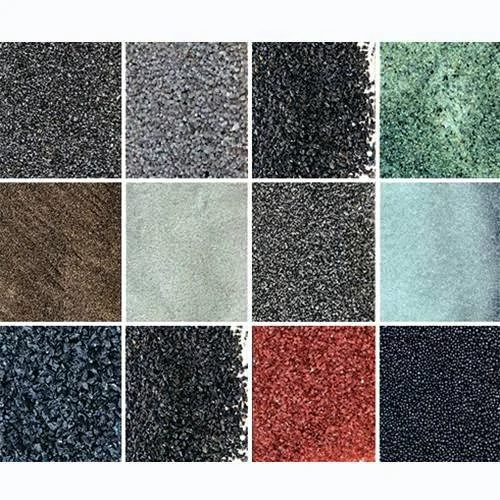As industries continue to demand higher levels of precision and efficiency, the need for advanced materials in surface finishing processes has never been greater. Surface treated abrasives are emerging as the solution to this evolving challenge. Combining traditional abrasive power with enhanced performance characteristics, these abrasives are redefining what’s possible in precision finishing across a range of industries. In this article, we explore how surface treated abrasives are shaping the future and why they are becoming the go-to choice for achieving exceptional results.
1. What are Surface Treated Abrasives?
Surface treated abrasives are traditional abrasive grains that have undergone a chemical or physical treatment process to improve their performance characteristics. This treatment can include the addition of bonding agents, lubricants, or coatings that enhance their cutting ability, durability, and heat resistance. The result is an abrasive material that outperforms conventional abrasives in critical areas such as wear resistance, thermal stability, and surface finish quality.
- Enhanced cutting efficiency: The surface treatment allows abrasives to cut through materials with greater precision and speed, reducing the amount of force required and minimizing wear.
- Improved longevity: Treated abrasives exhibit a longer lifespan due to increased resistance to wear and degradation, particularly in demanding industrial environments.
- Thermal management: Surface treatments can enhance the abrasive’s ability to dissipate heat, which is crucial when working with heat-sensitive materials or performing high-speed operations.
2. The Role of Surface Treated Abrasives in Precision Finishing
Precision finishing is critical in industries where exacting standards are required, such as aerospace, automotive, and electronics. Achieving a flawless surface finish is not merely about removing material; it involves controlling the process to ensure minimal damage to the workpiece while achieving the desired texture and appearance. Surface treated abrasives excel in this domain by offering greater control, consistency, and reliability.
- Consistency in results: Surface treated abrasives deliver uniform wear patterns, which leads to consistent surface finishes throughout the operation. This is particularly important in high-precision industries where even minor deviations can lead to product failure.
- Reduction in surface damage: The treatment reduces the risk of overcutting or gouging, ensuring that the surface remains smooth and free from defects.
- Efficiency in high-tolerance applications: For applications that require tight tolerances, such as grinding turbine blades or polishing semiconductor wafers, surface treated abrasives provide the necessary control and finesse.
3. Benefits of Using Surface Treated Abrasives
The benefits of surface treated abrasives are numerous, particularly when considering their performance in high-precision, high-demand applications. Their ability to deliver improved outcomes in terms of speed, accuracy, and surface finish makes them invaluable in modern manufacturing processes.
- Higher productivity: With enhanced cutting efficiency, treated abrasives allow operators to work faster without compromising the quality of the finish, ultimately increasing throughput in production environments.
- Reduced downtime: The extended lifespan of surface treated abrasives translates to less frequent tool changes, reducing machine downtime and increasing operational efficiency.
- Cost savings: While surface treated abrasives may come at a premium, their durability and performance often result in lower overall costs due to reduced consumption and longer intervals between replacements.
- Environmental impact: Many surface treatments are designed to be more environmentally friendly, reducing the need for coolants or other chemicals in the finishing process, and leading to greener operations.
4. Innovations in Surface Treatment Technology
As technology advances, so do the capabilities of surface treated abrasives. Recent innovations in materials science have led to the development of new coatings and bonding agents that further enhance the performance of abrasives. These breakthroughs are particularly important in industries that require advanced surface finishes or where extreme conditions, such as high temperatures and pressures, are a factor.
- Nanotechnology coatings: The use of nanotechnology in surface treatments has led to abrasives with ultra-fine coatings that provide superior performance without adding significant bulk or weight to the grain.
- Advanced bonding agents: New bonding agents have been developed to improve the durability of abrasives, making them more resistant to wear and tear while maintaining cutting efficiency.
- Heat-resistant treatments: Special coatings designed to dissipate heat more effectively are becoming increasingly common, allowing surface treated abrasives to perform optimally in high-temperature environments.
5. Future Prospects of Surface Treated Abrasives
The future of surface treated abrasives looks bright, as more industries recognize the value of these advanced materials. As precision manufacturing becomes more demanding, the need for abrasives that can deliver exceptional results while maintaining efficiency will continue to grow. Surface treated abrasives are poised to lead the charge in this evolution, offering manufacturers the tools they need to stay competitive in a rapidly changing landscape.
- Increasing demand in advanced manufacturing: As industries such as aerospace, electronics, and medical devices continue to evolve, the need for ultra-precise surface finishes will drive the adoption of surface treated abrasives.
- Integration with automated systems: As more manufacturers adopt automation, surface treated abrasives will become an integral part of these systems, offering the consistency and reliability needed for automated precision finishing.
- Sustainability initiatives: With a growing focus on sustainability, the development of eco-friendly surface treated abrasives that reduce waste and environmental impact will be a key area of innovation.
Conclusion
Surface treated abrasives are redefining the standards of precision finishing, offering superior performance, durability, and efficiency in a wide range of applications. From aerospace components to medical devices, these advanced abrasives are helping industries achieve the level of detail and quality required in today’s competitive market. As technology continues to evolve, the role of surface treated abrasives in precision finishing will only become more prominent, driving innovation and excellence in manufacturing processes.
